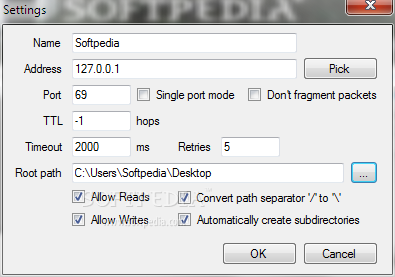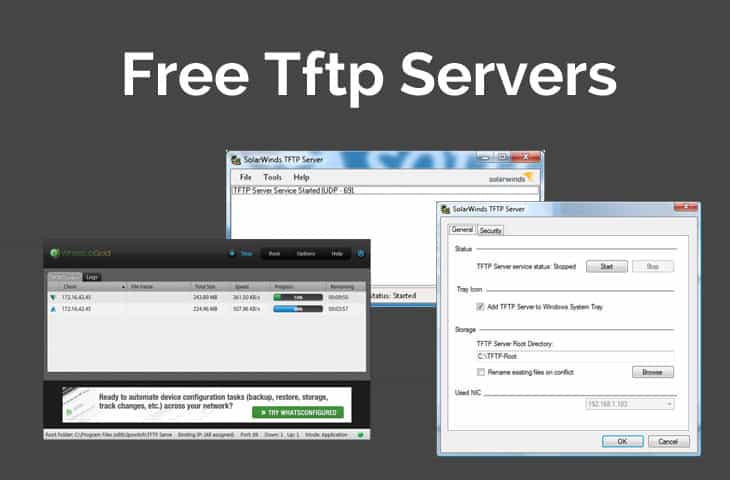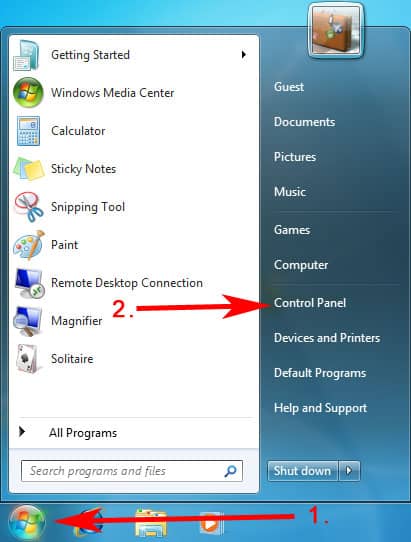

- #WINDOWS TFTP CLIENT COMMAND LINE HOW TO#
- #WINDOWS TFTP CLIENT COMMAND LINE INSTALL#
- #WINDOWS TFTP CLIENT COMMAND LINE ARCHIVE#
- #WINDOWS TFTP CLIENT COMMAND LINE SOFTWARE#
Step 7 If needed, use the ping command to verify accessibility. Step 6 If needed, enter the gateway command to specify the IP address of a router gateway through which the server is accessible. In UNIX, the file needs to be world readable for the TFTP server to access it. Step 5 Use the file command to specify the filename of the PIX Firewall image. Step 4 Use the server command to specify the IP address of the host running the TFTP server. Step 3 Use the address command to specify the IP address of the PIX Firewall unit's interface on which the TFTP server resides. Step 2 If desired, enter a question mark (?) to list the available commands.

Step 1 Immediately after you power on the PIX Firewall and the startup messages appear, send a BREAK character or press the Esc (Escape) key. Use the following steps to download an image over TFTP using the monitor command:
#WINDOWS TFTP CLIENT COMMAND LINE INSTALL#
Then follow the prompts that appear to install the server on your system. Once the file is stored on your Windows system, double-click it to start the setup program.
#WINDOWS TFTP CLIENT COMMAND LINE ARCHIVE#
The file you download is a self-extracting archive that you can use with Windows 98, Windows ME, Windows NT version 4.0, or Windows 2000. Step 4 Use the get command to copy the TFTP executable file to your directory. Use the ls command to view the directory contents.
#WINDOWS TFTP CLIENT COMMAND LINE SOFTWARE#
Then enter the cd tftp command to access the TFTP software directory. Step 3 Enter the cd cisco command to move to the top level software directory. Step 2 You can view the files in the main directory by entering the ls command. Step 1 Start your FTP client and connect to. You can download the server from the following website:įollow these steps to download the server by FTP:

This section includes the following topics: The UNIX, Solaris, and Linux operating systems contain a TFTP server. If your computer runs the Windows operating system and you have a CCO login, you can download a TFTP server from Cisco from the Web or by FTP. You must have a TFTP server to install the PIX Firewall software.
#WINDOWS TFTP CLIENT COMMAND LINE HOW TO#
This appendix describes how to use a TFTP server to access PIX Firewall or PDM images. Below is the example to delete a file named testfile.txt ftp> delete testfile.Enabling TFTP Access on a Sun Solaris Systemĭetermining the IP Address of Your TFTP Server We can delete the remote file with delete command. We can terminate the current FTP session and exit from FTP shell with exit command. ftp> get testfile.txt Terminate FTP Session and Exit Below the example command to copy testfile.txt from the current working directory to your local directory. To get a file from the remote FTP server, you can use get command to do it. Use this parameter instead of redirection ( send testfile.txt These commands run automatically after ftpstarts. Specifies a text file that contains ftp commands. For more information, see additional references. Glob permits the use of the asterisk (*) and question mark (?) as wildcard characters in local file and path names. Suppresses auto-login upon initial connection.ĭisables file name globbing. Suppresses display of remote server responses.Įnables debugging, displaying all commands passed between the FTP client and FTP server.ĭisables interactive prompting during multiple file transfers. For secure data transmission, FTP is secured by SSL/TLS (FTPS) or replaced by SSH File Transfer Protocol (SFTP).īelow is the list of the commands available when you are using Windows command-line FTP Client.

You can using FTP Commands on Command Prompt or PowerShell to transfer any data to and from a computer running a File Transfer Protocol Server.įTP is not an encrypted transmission, which means anyone could read any data sent over it. By default, FTP Client is available on Windows Computer.


 0 kommentar(er)
0 kommentar(er)
